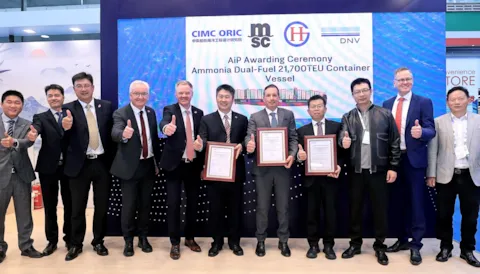
03 December, 2025
DNV awards MSC, Zhoushan Changhong International, and CIMC ORIC AiP for new 21,700 TEU ammonia powered mega-boxship
DNV has awarded an Approval in Principle (AiP) to the joint consortium of MSC, Zhoushan Changhong International, and CIMC ORIC for a new 21,700 TEU ammonia-dual fueled ultra-large container ship desig...